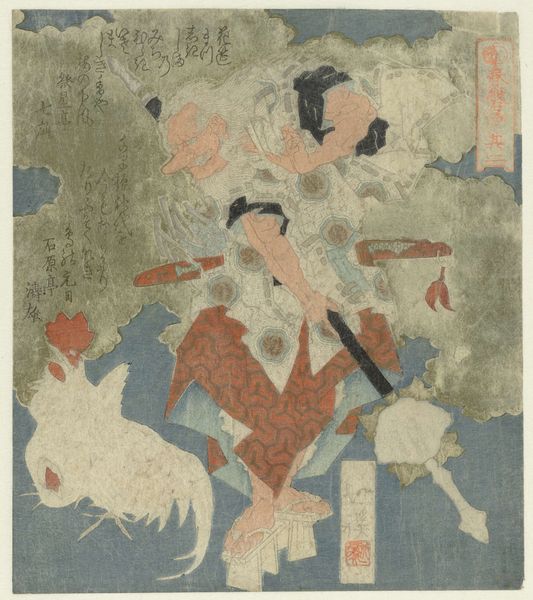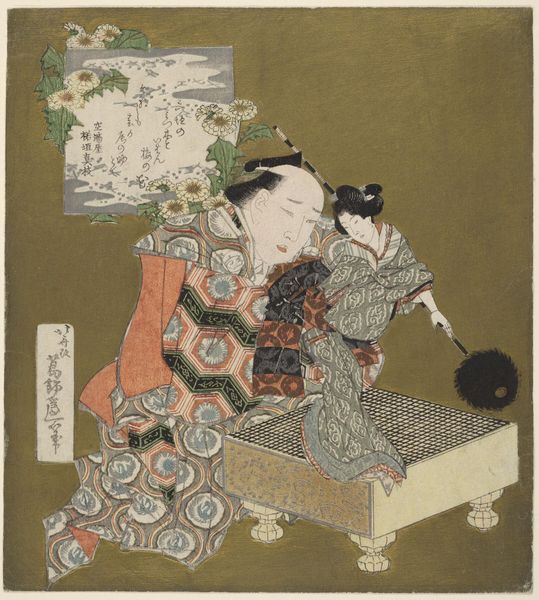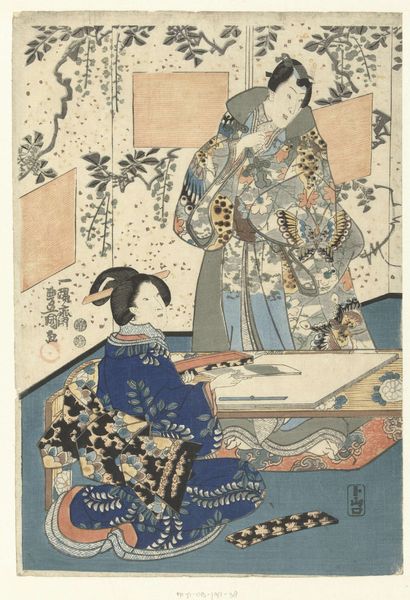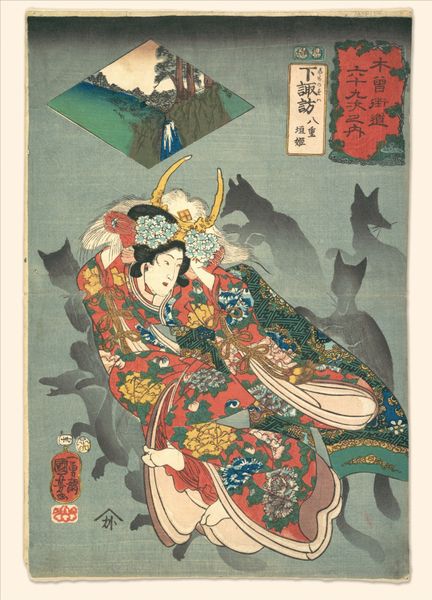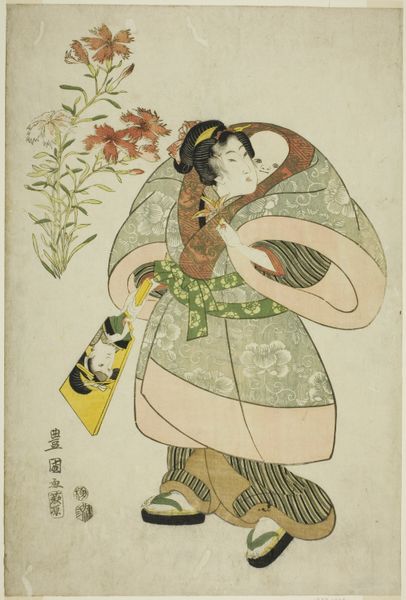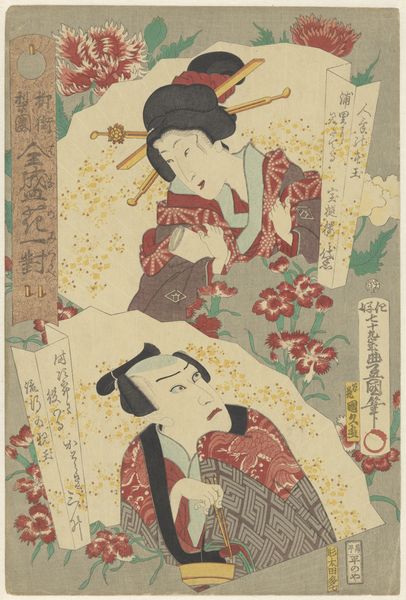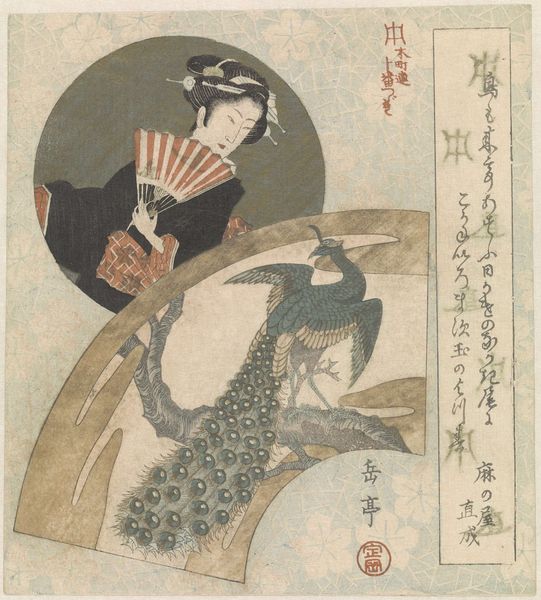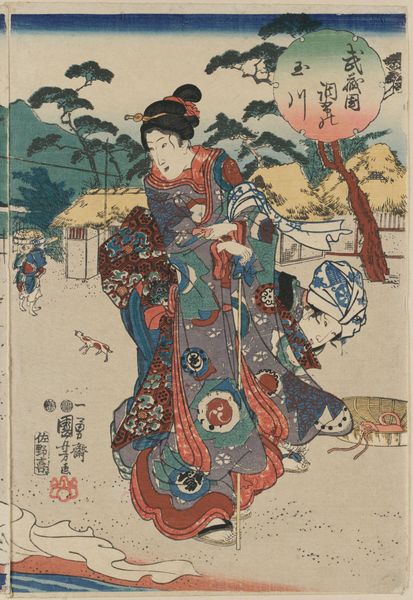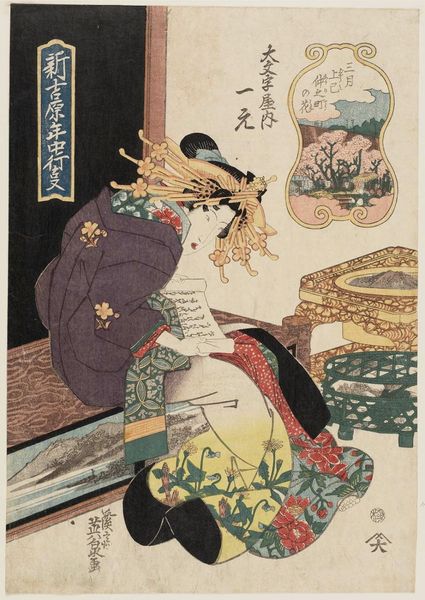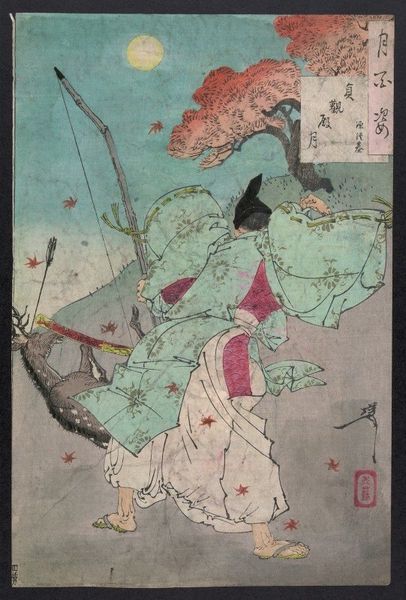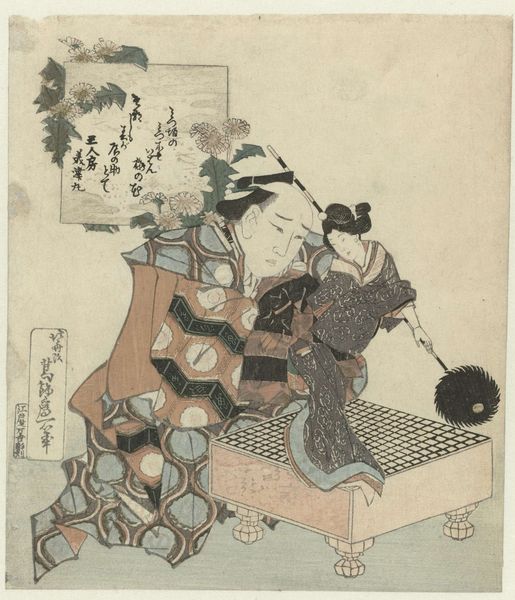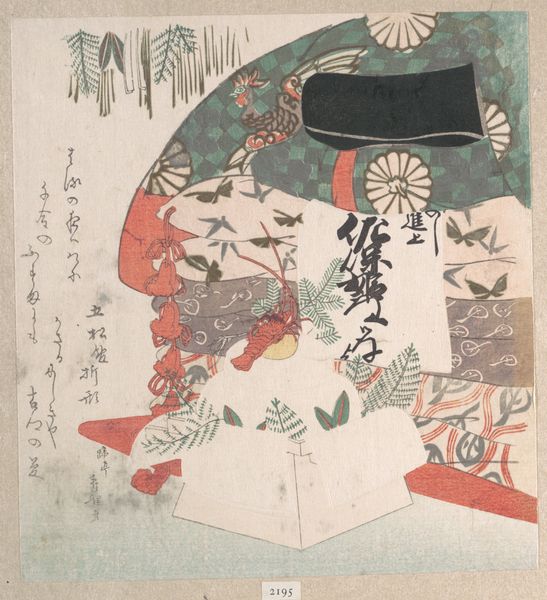
print, woodblock-print
#
narrative-art
# print
#
asian-art
#
ukiyo-e
#
figuration
#
woodblock-print
Dimensions: height 208 mm, width 179 mm
Copyright: Rijks Museum: Open Domain
Editor: Here we have Totoya Hokkei’s "Number Two: God with Roosters," a woodblock print from 1825, held here at the Rijksmuseum. My first impression is of an unsettling power; the figure looms with an intensity that’s hard to ignore. What do you make of the imagery presented here? Curator: The piece is a window into a vibrant symbolic language. Look closely. What do the rooster figures represent to you, especially juxtaposed with such a fearsome figure? Editor: Well, roosters are associated with dawn, with new beginnings and warding off evil… But this "God" seems far from benevolent! The combination feels…contradictory? Curator: Exactly! Ukiyo-e often layers meaning. Notice how the figure’s garments also feature recurring patterns, perhaps referencing clan symbols or societal roles that would have resonated with the original audience. It explores cultural memory and continuity. Editor: So, it’s not just about good versus evil, but about deeper cultural narratives? How does the figure himself contribute? I can’t decide if his face is menacing, humorous, or both. Curator: Faces like this are important. This might be interpreted as an aspect of a complex deity; the fearsome visage serving to protect or judge. Consider how visual symbols have shaped and continue to shape our perceptions, prejudices, and understanding of the world around us. Does this change how you view the chickens? Editor: I suppose… They become more about a specific cultural moment, less universal symbols, more pieces in a larger puzzle of Hokkei’s time. It’s fascinating how much the reading can shift just by looking at a specific choice of detail. Curator: Precisely. And these layered meanings continue to ripple through time, offering new insights with each viewing.
Comments
No comments
Be the first to comment and join the conversation on the ultimate creative platform.
